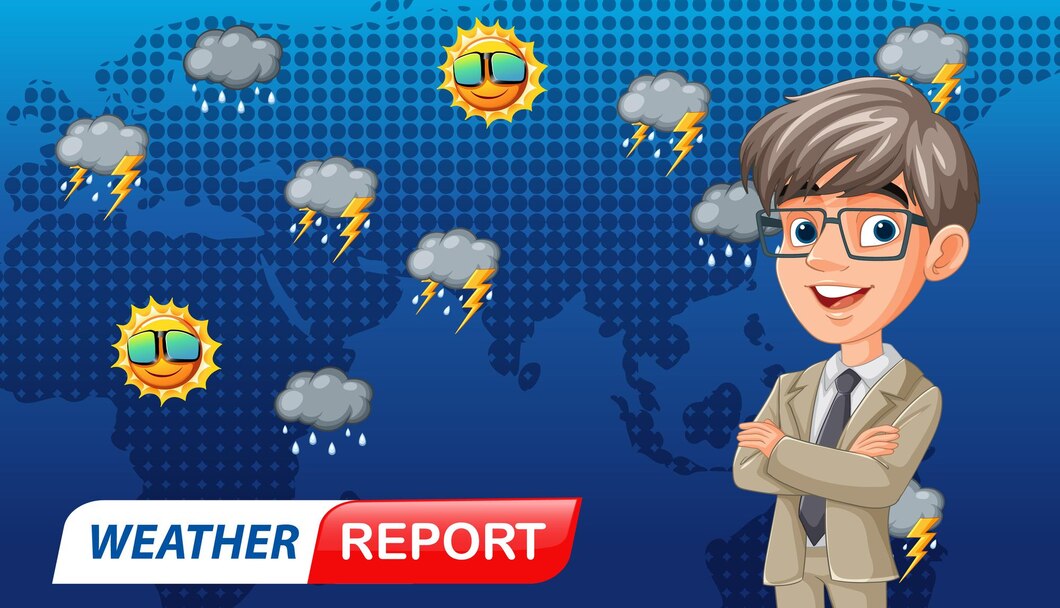National Weather Service: A Lifesaving Resource for All Americans
Few organizations are as important for keeping current on the weather than the National Weather Service (NWS). From warning of tornadoes to forecasting winter storms, the NWS is essential in protecting life, property, and the economy. Whether your beach day is scheduled, you are getting ready for hurricane season, or you are negotiating winter road conditions, chances are the National Weather Service has already sent essential information to direct your choices.
This article investigates the background, organization, operations, and future of the National Weather Service to illustrate why millions of Americans daily still find it to be an essential tool.
Define the National Weather Service
Within the National Oceanic and Atmospheric Administration (NOAA), a government organization housed under the U.S. Department of Commerce, is the National Weather Service. Originally formed to offer accurate, timely weather forecasts and warnings, the NWS has one goal in mind: to safeguard property and lives as well as boost the national economy.
With its headquarters in Silver Spring, Maryland, the National Weather Service runs out of thirteen River Forecasts Centers, 122 local Weather Forecast Offices (WFOs), and nine National Centers for Environmental Prediction (NCEPs). These divisions cooperate to track hydrological and atmospheric conditions all throughout the United States.
A Synopsis of National Weather Service History
President Ulysses S. Grant signed a joint resolution of Congress allowing the establishment of a national weather organization inside the Army Signal Service in 1870, effectively starting the National Weather Service. Originally called the Division of Telegrams and Reports for the Benefit of Commerce, it was the first coordinated meteorological organization in the country.
Under the Department of Agriculture, newly established Weather Bureau took over weather duties in 1890. The bureau was subsequently renamed the National Weather Service and merged under the recently formed NOAA in 1970.
The National Weather Service’s Operations
The National Weather Service depends on a vast system of observational techniques and technologies to provide accurate and timely information:
1. Satellites for Weather
Real-time picture of cloud cover, storm development, and temperature patterns is offered by geostationary and polar-orbiting satellites. NOAA runs these satellites, which produce vital information for warnings and forecasts.
2. Radiating Systems
Under the Next Generation Weather Radar (NEXRAD) network, the NWS runs more than 150 Doppler radar sites all throughout the nation. Essential for tornado identification, these radars pick out precipitation, wind movement, and storm rotation.
3. Temperature Balloons
Weather balloons are launched twice a day from more than ninety American stations. Instruments measuring temperature, humidity, wind speed, and pressure at several atmospheric levels are carried on these balloons.
4. Supercomputers and Modeling
The National Weather Service employs some of the most potent supercomputers in the world to help understand the data. These devices run sophisticated mathematical models designed to replicate and forecast meteorological events.
Main Services Provided by the National Weather Service
Aiming at many spheres of life, the National Weather Service offers a wide spectrum of services. The main services you ought to be familiar with are:
Forecasts and Alerts
From hourly weather updates to 7-day predictions, the NWS offers specific information for local and national areas. Above all, it generates life-saving warnings including:
-
Tornado Alerts
-
Strong Thunderstorm Alerts
-
Alert Notes and Watches for Hurricanes
-
Alerts for Flash Flood
-
Advice on Winter Weather
TV, radio, the internet, Wireless Emergency messages on mobile phones all help to broadcast these messages.
Aviation Forecasts Services
Working closely with the FAA, the National Weather Service provides pilots and air traffic controllers with weather updates impacting flight safety, including turbulence, icing, and wind shear, so supporting aviation safety.
Coastal and Marinerical Forecasting
Forecasts and advisories for American coastal waters including the Great Lakes are supplied by the NWS. Recreational boaters, shipping, and commercial fishing depend on these services.
Flood and River Forecasting
By means of its River Forecast Centers, the National Weather Service tracks river levels, forecasts flood potential, and generates flood warnings. This service facilitates community readiness for and reaction to flooding incidents.
Fire Forecasts: Weather
Forecasts assessing wildfire potential rely on the NWS for emergency responders and firefighters. In the western U.S., where wildfires are a continual concern, these services are especially important.
Emergency Management and the National Weather Service
Disaster response and emergency preparedness depend much on the National Weather Service. Working with local governments, FEMA, and emergency managers, the NWS guarantees timely weather threat notification. Whether it’s calling for evacuations or creating emergency shelters, its projections help communities make wise decisions.
For example, the NWS works with state and federal organizations to produce forecasts days ahead before a hurricane strikes. Press conferences, emergency alerts, and media briefings let officials use these forecasts to guide the public and coordinate resources.
Accessing the National Weather Service: Figures
Getting National Weather Service data is free and simple. Among the most often used techniques are these:
-
Users of www.weather.gov may view current conditions, forecasts, and alerts depending on ZIP code on a simple interface.
-
NOAA Weather Radio is a national system of radio stations immediately transmitting continuous weather data straight from the closest NWS office.
-
The NWS works with FEMA and wireless providers to send Wireless Emergency Alerts (WEAs) straight to mobile devices for significant weather.
-
Most local NWS offices have active Twitter and Facebook profiles to instantly inform communities.
Innovations and the National Weather Service’s Future
The National Weather Service is adjusting as climate change keeps raising the frequency and intensity of severe storm events. These are some of the main developments and inventions under progress:
1. Warnings Based on Impact
The NWS increasingly emphasizes what the weather will do rather than only describing what it will be. These impact-based alerts enable consumers to better grasp the hazards connected to extreme storms such flash floods and tornadoes.
2. Initiative for Weather-Ready Nationhood
Initiated to strengthen community resilience, this project guarantees more people are ready for severe weather by means of collaborations among the NWS, schools, companies, media, and emergency services.
3. Enhanced Supercomputers
NOAA has improved its forecasting supercomputers recently, greatly enhancing real-time storm tracking and long-range weather forecasts’ accuracy.
4. Machinelearning and Artificial Intelligence
To examine artificial intelligence for analysis of large databases, pattern recognition, and speed and precision enhancement of forecasts, the National Weather Service
National Weather Service Success Stories
Countless actual cases clearly show the National Weather Service’s efficacy:
-
Joplin, Missouri, 2011: Early warnings from the NWS allowed citizens 20 minutes to seek cover during one of the worst tornadoes in American history, therefore sparing thousands of lives.
-
Hurricane Harvey (2017): The NWS gave constant updates and flood forecasts to assist in Texas disaster response and evacuation planning.
-
Real-time fire weather alerts have enabled emergency teams to allocate resources and notify citizens before fast spreading wildfires.
The Value of the National Weather Service
The National Weather Service has importance beyond just forecasts. It’s about saving lives, safeguarding property, and arming Americans with the knowledge to meet the elements. The NWS is a pillar of scientific excellence and public service in a time of growing weather variability.
From the farmer planning a crop based on rainfall projections to the parent looking for school closures due to snow to the airline rerouting flights to minimize turbulence—the National Weather Service impacts life in both large and small scale.
Last Thoughts
The National meteorological Service is a national asset supporting public safety, economic stability, and disaster readiness rather than only a source of meteorological information. The NWS keeps leading the way with creative ideas, worldwide alliances, and a strong dedication to its basic goal as technology develops and climatic problems grow more pressing.
Thus, keep in mind behind that basic forecast is a network of scientists, meteorologists, and public servants working 24/7 to keep you safe—courtesy of the National Weather Service—next time you check the weather.




